How the War Crates Flew: The Instrument Board
FROM the pages of the December 1934 number of Sky Fighters:
Editor’s Note: We feel that this 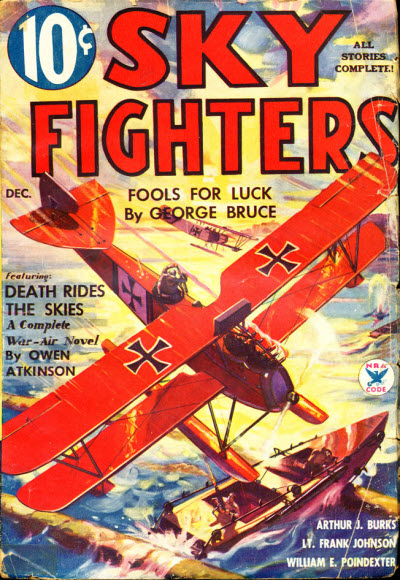 magazine has been exceedingly fortunate in securing Lt. Edward McCrae to conduct a technical department each month. It is Lt. Mcrae’s idea to tell us the underlying principles and facts concerning expressions and ideas of air-war terminology. Each month he will enlarge upon some particular statement in the stories of this magazine. Lt. MaCrae is qualified for this work, not only because he was a war pilot, but also because he is the editor of this fine magazine.
magazine has been exceedingly fortunate in securing Lt. Edward McCrae to conduct a technical department each month. It is Lt. Mcrae’s idea to tell us the underlying principles and facts concerning expressions and ideas of air-war terminology. Each month he will enlarge upon some particular statement in the stories of this magazine. Lt. MaCrae is qualified for this work, not only because he was a war pilot, but also because he is the editor of this fine magazine.
The Instrument Board
by Lt. Edward McCrae (Sky Fighters, December 1934)
ALL RIGHT, you ring-tailed gazookuses, the class will now come to attention, which is what I don’t want anything but. Mary, take that gum out of your mouth and stick it back of your ear until school is over. And Johnny, you quit dropping those fishing worms down Irene’s back. Put ’em, in your pocket until you find a fish that wants them.
So, clean out your ears and get ready to do some concentrated listening, because this time I am going to tell you some stuff that would sound awfully technical if anybody except myself were to try to explain it to you. But when I start to talk, even you dumbkopfs ought to be able to understand it.
“Where Am I At?”
The subject of the sermon, today is taken from the first book of Aviatus, second chapter and third verse. It says here, “And the aviator came unto me saying, ‘Where am I at?’ And I answered unto him thusly, saying, ‘Learn to read your instruments and thou wilst know where thou art at’.”
And so we plungeth inneth.
Now whether you knot-heads know it or not, there is a difference between an airplane and an automobile. The point is that a car buzzes along on a highway and if something goes wrong you can pull over to the side of the road and find out what it is and maybe get towed in. And if you get lost on the road you can ask where the right road is and get on it.
When Things Go Wrong
Well, sir, believe it or not, you can’t do that in an airplane. If you are in the air over the German lines and something goes wrong with the ship you don’t want to pull over to some German camp and get them to fix you up so you can go on your way. And if you happen to get lost, you don’t want to stop some Heinie and ask him where you can find the Hamfstengle Air Circus which you were sent out to bomb.
All of which means that since we couldn’t stop to make repairs and ask questions we had to carry our information along with us when we went out sniping Heinies. We carried that information on the instrument board, in the form of dials with needles and other kinds of indicators.
Times Have Changed
It wasn’t like it is now. In these days you can look at the instrument board of a good ship and see a record of what your Aunt Mehitabell had for breakfast and how it is affecting her indigestion. Today they have turn and bank indicators that register the angle of the bank before your eyes. During the war that was registered on the seat of our pants. If we were slipping down to the left we felt it by sliding in the seat and so on.
But we had instruments. And they fall into two groups, according to their purpose. One group is for the purpose of knowing how the motor is doing at all times so we wouldn’t have to stop and get a Boche to do a repair job for us. And the other group was for the purpose of telling us where we were or ought to be so we wouldn’t have to ask a German to direct us on our way.
A Handful of Gadgets
For the engine we had a switch to turn it on and off, a tachometer to record the number of revolutions of the motor, fuel and oil gauges, etc.
And for getting around places and knowing where we were, we had an air speed indicator, an altimeter, a compass and a clock.
By the side of a list of present day instruments you would get the impression that this little handful of gadgets wouldn’t be enough to successfully navigate a kiddie-kar. But we got there, folks. Ask ’em if we didn’t!
Pretty Bare, Eh?
Take a look at Figure 1 and you will get some kind of an idea what the board of one of the old crates looked like. Looks pretty bare, doesn’t it? Well, it wasn’t the face of the instruments that did the work, it was the insides of them that performed the job. And if you want to know something about the problems of the birds that had the task of devising ways for us to know what was going on in the ship, just take a look inside one or two of those instruments. It was those tiny little hairsprings and needles that won the war.
That’s a big statement, but I can prove it. There’s no use in going into detail as to that, so I’ll get on with the lesson and show you how they did it.
How They Worked
There are some of the instruments that could be adapted from automobile and other uses. Things like thermometers and the compass and the tachometer. But in case you didn’t happen to look into the matter the last time you were playing around an instrument factory I’ll tell you how they worked.
A tachometer, or “tack” or a “/*!!&* tack” as it was called when it wasn’t working properly was a simple device adopted from the speedometer of an automobile or any other machine that had to record the number of revolutions a wheel or anything made. You merely had a flexible shaft with one end attached to or in contact with the crankshaft of the engine. The other end had a governor on it. The faster the engine turned the more the governor spread out. Then the amount of spread was recorded on the dial which is marked off in thousands of revolutions a minute. The tach didn’t tell you how fast you were going, but only how fast the engine was turning. You knew in advance how many revs it should turn for this and that, for climbing, for gliding, straight flight, and so forth. (Figure 2, if you’re interested.)
And while we’re on the simple things, we might clean up the thermometer. That little gadget ordinarily operates by having a tube with some kind of liquid like mercury or sulphur dioxide or methyl chloride in it. All these liquids expand under heat. As they expand they naturally rise up in the tube and the readings are marked on the tube.
The Distant Type
But an engine thermometer had to be read back in the cockpit, so they made a variation of this principle which comes under the head of “distant type thermometers.” If you will take your eyes off that circus parade that’s passing and look at Figure 3 you’ll see what one looks like.
What happened when it was supposed to register the temperature of the oil and the water and those things that were not supposed to get too hot if you wanted to stay in the air was this:
The part called the bulb contained methyl chloride which makes a vapor when it gets hot. The juice creates the vapor which then fills the tube running to the dial (the capillary tube) and that then exerts pressure on the Bourdon Tube which is that curled part with the needle attached. The needle then registers the temperature as indicated by the amount of pressure in the Bourdon Tube.
I’ve got to hurry through this lesson because I’ve got a date with a blonde who is “just crazy about flyers” so I’ll first tell you that the air speed indicator also works by pressure, and then explain how the pressure gauge system works so you will never forget it.
Air Speed Indicator
Now, to get the recording of the amount of speed with which you are passing through the air you have an air speed indicator. It is a combination of a Bourdon Tube and what is called a Pitot tube.
The Pitot tube is hollow and usually runs out a wing, up a strut, and ends by sticking out forward from the strut. You’d think it was a piece of gas line that was broken off. But here’s what you’ve got. When the ship is flying forward there is naturally head resistance. That open-ended tube sticking straight forward into the wind has the increased wind pressure entering the hole in it. Naturally the pressure is greater than if the ship was standing still. The ship registers no miles per hour when it is still, but as it increases speed, the air pressure increases and that in turn increases the pressure inside the Bourdon Tube and makes the dial tell you how fast you are going through the air, not from point to point on the ground.
Stay Awake
Now there are other gauges that work by pressure. They all usually use the Bourdon Tube system, or a diaphram system. So, wake up long enough to look at Figure 4, and try to stay awake long enough for me to explain it to you, and then you will know how they work.
You see that thing like a question mark? That’s the Bourdon Tube. It is hollow and made out of bronze or brass. The pressure from the thermometer or Pitot Tube, or hot oil or hot water or what have you comes in through the tube connection and enters the Bourdon Tube.
The pressure tries to straighten out the question mark and make an exclamation point out of it, like what goes after the word damn.
Speaking of Throttles
But was that air pressure or vapor pressure’s face red? The end of the tube was tied to a little gear apparatus and that was geared to a dial. So as the pressure huffs and puffs and tries to blow the house down it really succeeds only in straightening out the question mark a little bit, and in doing that, it makes the needle turn around in front of the dial and the needle says to the flyer, ‘‘watch out, your water’s getting too hot. Better throttle down.”
And in speaking of throttles, you buzzards beat it before my date shows up or I’ll throttle the whole bunch of you.
Scram!









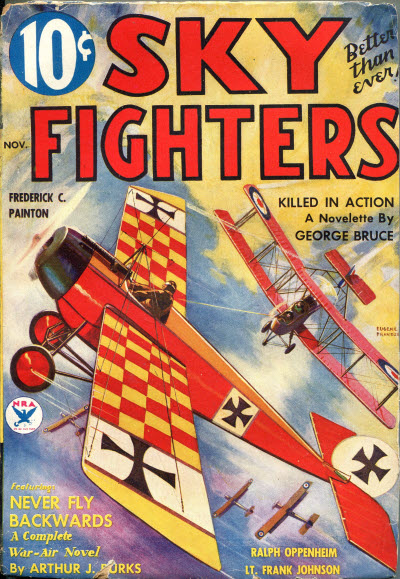 magazine has been exceedingly fortunate in securing Lt. Edward McCrae to conduct a technical department each month. It is Lt. Mcrae’s idea to tell us the underlying principles and facts concerning expressions and ideas of air-war terminology. Each month he will enlarge upon some particular statement in the stories of this magazine. Lt. MaCrae is qualified for this work, not only because he was a war pilot, but also because he is the editor of this fine magazine.
magazine has been exceedingly fortunate in securing Lt. Edward McCrae to conduct a technical department each month. It is Lt. Mcrae’s idea to tell us the underlying principles and facts concerning expressions and ideas of air-war terminology. Each month he will enlarge upon some particular statement in the stories of this magazine. Lt. MaCrae is qualified for this work, not only because he was a war pilot, but also because he is the editor of this fine magazine.


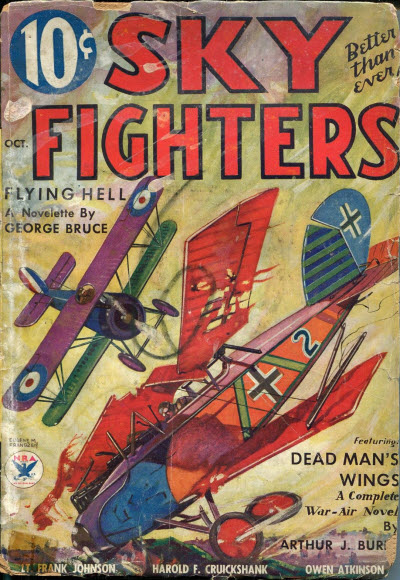 magazine has been exceedingly fortunate in securing Lt. Edward McCrae to conduct a technical department each month. It is Lt. Mcrae’s idea to tell us the underlying principles and facts concerning expressions and ideas of air-war terminology. Each month he will enlarge upon some particular statement in the stories of this magazine. Lt. MaCrae is qualified for this work, not only because he was a war pilot, but also because he is the editor of this fine magazine.
magazine has been exceedingly fortunate in securing Lt. Edward McCrae to conduct a technical department each month. It is Lt. Mcrae’s idea to tell us the underlying principles and facts concerning expressions and ideas of air-war terminology. Each month he will enlarge upon some particular statement in the stories of this magazine. Lt. MaCrae is qualified for this work, not only because he was a war pilot, but also because he is the editor of this fine magazine.


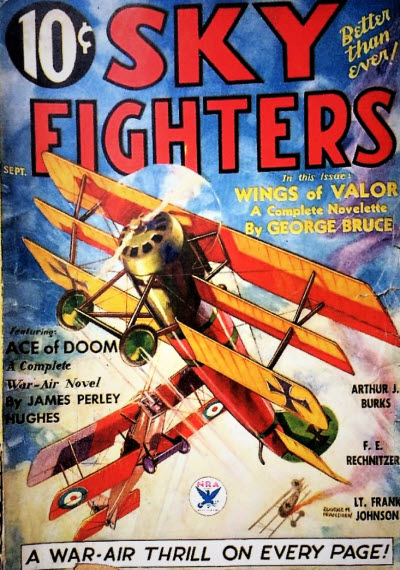 magazine has been exceedingly fortunate in securing Lt. Edward McCrae to conduct a technical department each month. It is Lt. Mcrae’s idea to tell us the underlying principles and facts concerning expressions and ideas of air-war terminology. Each month he will enlarge upon some particular statement in the stories of this magazine. Lt. MaCrae is qualified for this work, not only because he was a war pilot, but also because he is the editor of this fine magazine.
magazine has been exceedingly fortunate in securing Lt. Edward McCrae to conduct a technical department each month. It is Lt. Mcrae’s idea to tell us the underlying principles and facts concerning expressions and ideas of air-war terminology. Each month he will enlarge upon some particular statement in the stories of this magazine. Lt. MaCrae is qualified for this work, not only because he was a war pilot, but also because he is the editor of this fine magazine.


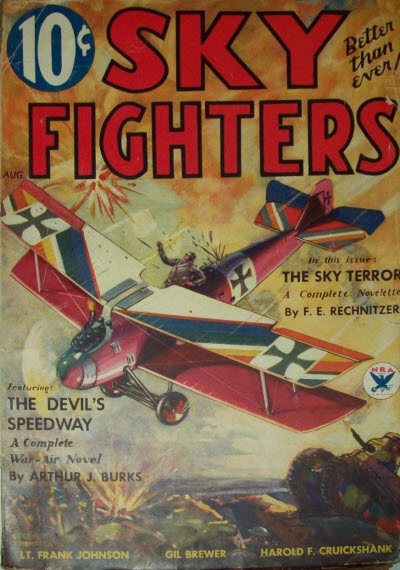 magazine has been exceedingly fortunate in securing Lt. Edward McCrae to conduct a technical department each month. It is Lt. Mcrae’s idea to tell us the underlying principles and facts concerning expressions and ideas of air-war terminology. Each month he will enlarge upon some particular statement in the stories of this magazine. Lt. MaCrae is qualified for this work, not only because he was a war pilot, but also because he is the editor of this fine magazine.
magazine has been exceedingly fortunate in securing Lt. Edward McCrae to conduct a technical department each month. It is Lt. Mcrae’s idea to tell us the underlying principles and facts concerning expressions and ideas of air-war terminology. Each month he will enlarge upon some particular statement in the stories of this magazine. Lt. MaCrae is qualified for this work, not only because he was a war pilot, but also because he is the editor of this fine magazine.


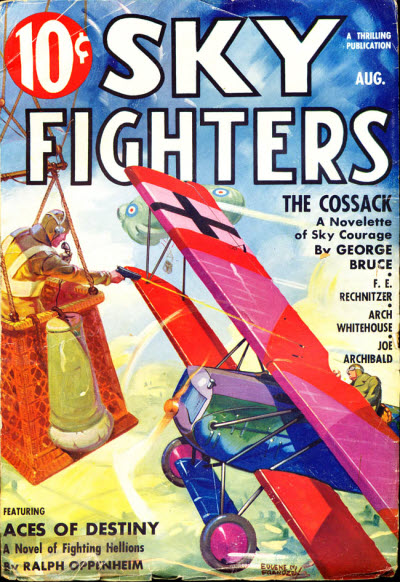 Mosquito Month we have a non-Mosquitoes story from the pen of Ralph Oppenheim. In the mid thirties, Oppenheim wrote a half dozen stories for Sky Fighters featuring Lt. “Streak” Davis. Davis—ace and hellion of the 25th United States Pursuit Squadron—was a fighter, and the speed with which he hurled his plane to the attack, straight and true as an arrow, had won him his soubriquet. Once more it’s a battle against time—B Flight is sent out on a perilous mission to destroy the new Boche anti-tank gun munitions factory by noon in hopes of preventing a massacre when the Allies push forward in their new Whippet tanks. However, after B flight has taken off, Streak learns a spy may have fouled their mission somehow and flies off like a streak to stop them before it’s too late! From the August 1936 issue of Sky Fighters it’s Ralph Oppenheim’s steak Davis in “Aces of Destiny!”
Mosquito Month we have a non-Mosquitoes story from the pen of Ralph Oppenheim. In the mid thirties, Oppenheim wrote a half dozen stories for Sky Fighters featuring Lt. “Streak” Davis. Davis—ace and hellion of the 25th United States Pursuit Squadron—was a fighter, and the speed with which he hurled his plane to the attack, straight and true as an arrow, had won him his soubriquet. Once more it’s a battle against time—B Flight is sent out on a perilous mission to destroy the new Boche anti-tank gun munitions factory by noon in hopes of preventing a massacre when the Allies push forward in their new Whippet tanks. However, after B flight has taken off, Streak learns a spy may have fouled their mission somehow and flies off like a streak to stop them before it’s too late! From the August 1936 issue of Sky Fighters it’s Ralph Oppenheim’s steak Davis in “Aces of Destiny!”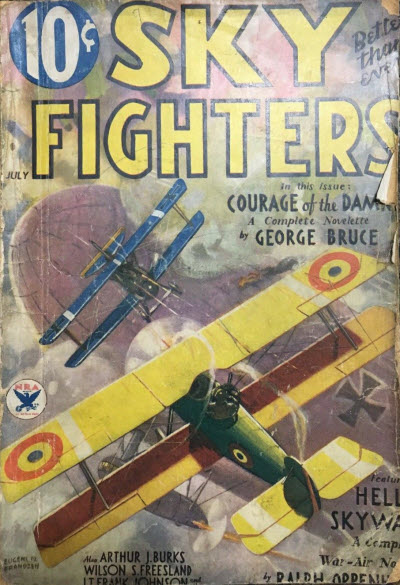 magazine has been exceedingly fortunate in securing Lt. Edward McCrae to conduct a technical department each month. It is Lt. Mcrae’s idea to tell us the underlying principles and facts concerning expressions and ideas of air-war terminology. Each month he will enlarge upon some particular statement in the stories of this magazine. Lt. MaCrae is qualified for this work, not only because he was a war pilot, but also because he is the editor of this fine magazine.
magazine has been exceedingly fortunate in securing Lt. Edward McCrae to conduct a technical department each month. It is Lt. Mcrae’s idea to tell us the underlying principles and facts concerning expressions and ideas of air-war terminology. Each month he will enlarge upon some particular statement in the stories of this magazine. Lt. MaCrae is qualified for this work, not only because he was a war pilot, but also because he is the editor of this fine magazine.


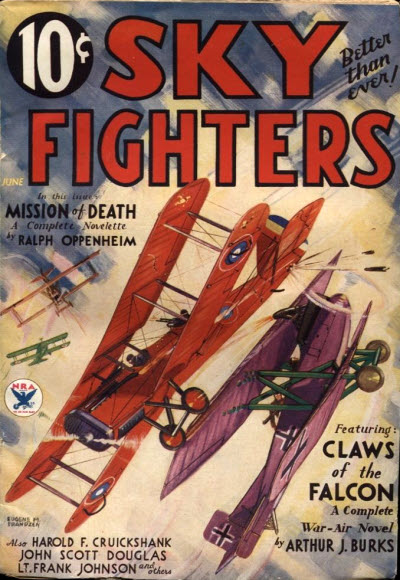 magazine has been exceedingly fortunate in securing Lt. Edward McCrae to conduct a technical department each month. It is Lt. Mcrae’s idea to tell us the underlying principles and facts concerning expressions and ideas of air-war terminology. Each month he will enlarge upon some particular statement in the stories of this magazine. Lt. MaCrae is qualified for this work, not only because he was a war pilot, but also because he is the editor of this fine magazine.
magazine has been exceedingly fortunate in securing Lt. Edward McCrae to conduct a technical department each month. It is Lt. Mcrae’s idea to tell us the underlying principles and facts concerning expressions and ideas of air-war terminology. Each month he will enlarge upon some particular statement in the stories of this magazine. Lt. MaCrae is qualified for this work, not only because he was a war pilot, but also because he is the editor of this fine magazine.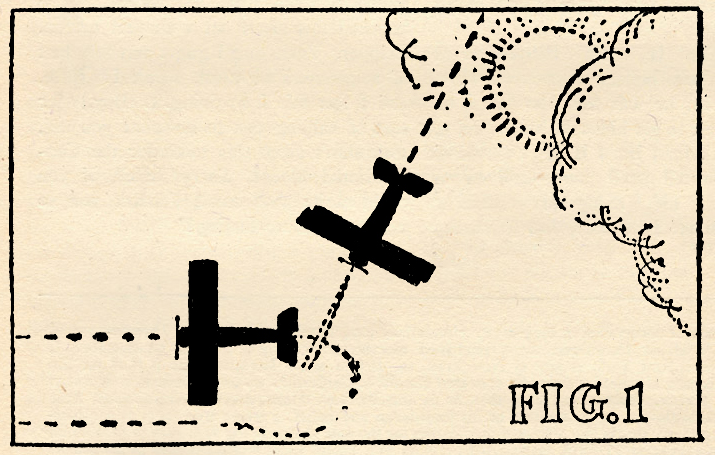
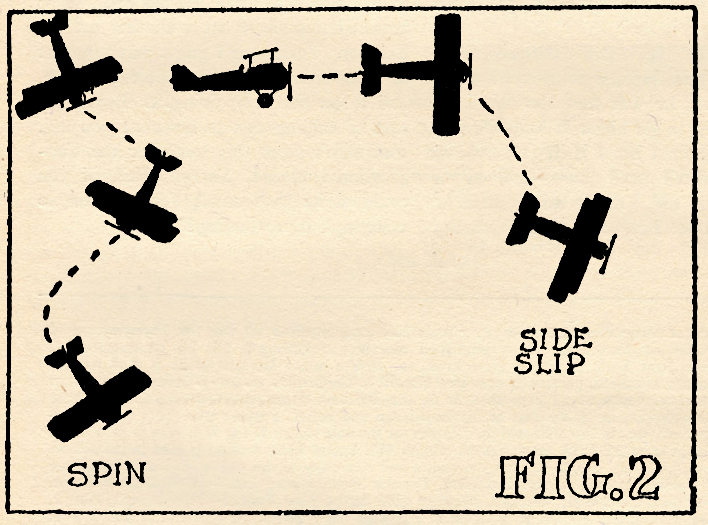
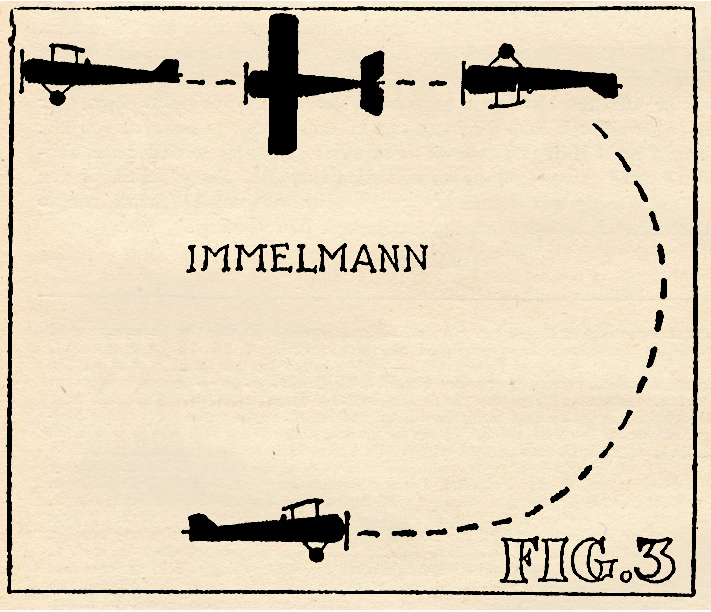
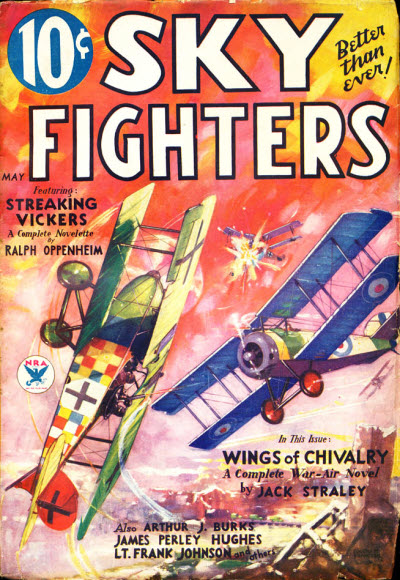 magazine has been exceedingly fortunate in securing Lt. Edward McCrae to conduct a technical department each month. It is Lt. Mcrae’s idea to tell us the underlying principles and facts concerning expressions and ideas of air-war terminology. Each month he will enlarge upon some particular statement in the stories of this magazine. Lt. MaCrae is qualified for this work, not only because he was a war pilot, but also because he is the editor of this fine magazine.
magazine has been exceedingly fortunate in securing Lt. Edward McCrae to conduct a technical department each month. It is Lt. Mcrae’s idea to tell us the underlying principles and facts concerning expressions and ideas of air-war terminology. Each month he will enlarge upon some particular statement in the stories of this magazine. Lt. MaCrae is qualified for this work, not only because he was a war pilot, but also because he is the editor of this fine magazine.


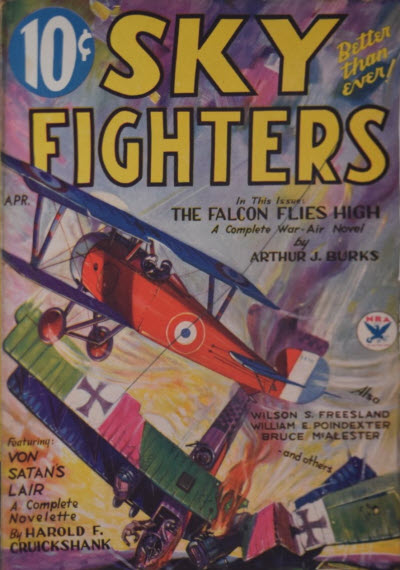 magazine has been exceedingly fortunate in securing Lt. Edward McCrae to conduct a technical department each month. It is Lt. Mcrae’s idea to tell us the underlying principles and facts concerning expressions and ideas of air-war terminology. Each month he will enlarge upon some particular statement in the stories of this magazine. Lt. MaCrae is qualified for this work, not only because he was a war pilot, but also because he is the editor of this fine magazine.
magazine has been exceedingly fortunate in securing Lt. Edward McCrae to conduct a technical department each month. It is Lt. Mcrae’s idea to tell us the underlying principles and facts concerning expressions and ideas of air-war terminology. Each month he will enlarge upon some particular statement in the stories of this magazine. Lt. MaCrae is qualified for this work, not only because he was a war pilot, but also because he is the editor of this fine magazine.


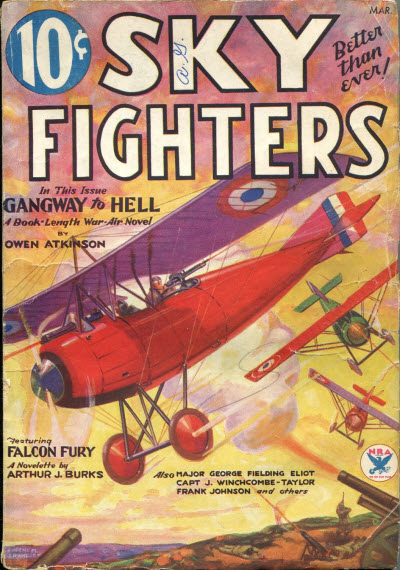 magazine has been exceedingly fortunate in securing Lt. Edward McCrae to conduct a technical department each month. It is Lt. Mcrae’s idea to tell us the underlying principles and facts concerning expressions and ideas of air-war terminology. Each month he will enlarge upon some particular statement in the stories of this magazine. Lt. MaCrae is qualified for this work, not only because he was a war pilot, but also because he is the editor of this fine magazine.
magazine has been exceedingly fortunate in securing Lt. Edward McCrae to conduct a technical department each month. It is Lt. Mcrae’s idea to tell us the underlying principles and facts concerning expressions and ideas of air-war terminology. Each month he will enlarge upon some particular statement in the stories of this magazine. Lt. MaCrae is qualified for this work, not only because he was a war pilot, but also because he is the editor of this fine magazine.


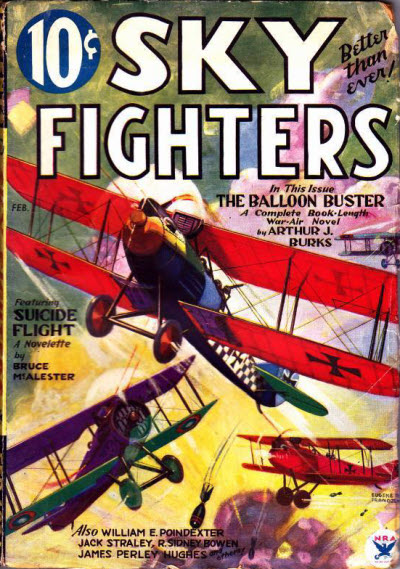 magazine has been exceedingly fortunate in securing R. Sidney Bowen to conduct a technical department each month. It is Mr. Bowen’s idea to tell us the underlying principles and facts concerning expressions and ideas of air-war terminology. Each month he will enlarge upon some particular statement in the stories of this magazine. Mr. Bowen is qualified for this work, not only because he was a war pilot of the Royal Air Force, but also because he has been the editor of one of the foremost technical journals of aviation.
magazine has been exceedingly fortunate in securing R. Sidney Bowen to conduct a technical department each month. It is Mr. Bowen’s idea to tell us the underlying principles and facts concerning expressions and ideas of air-war terminology. Each month he will enlarge upon some particular statement in the stories of this magazine. Mr. Bowen is qualified for this work, not only because he was a war pilot of the Royal Air Force, but also because he has been the editor of one of the foremost technical journals of aviation.
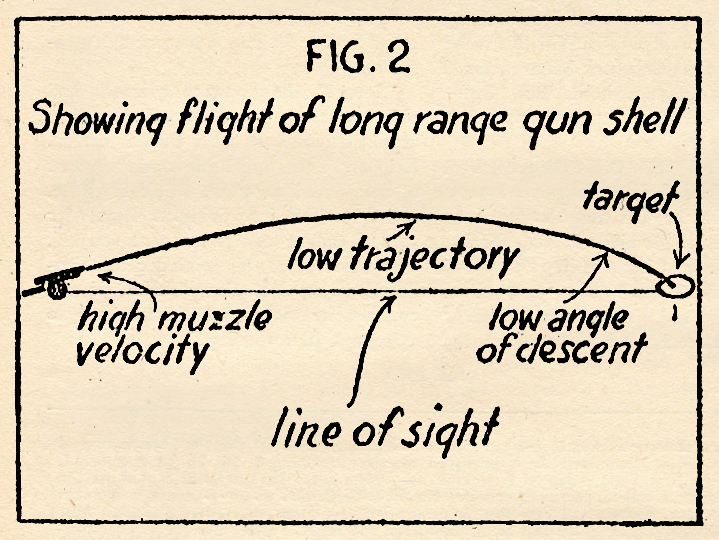
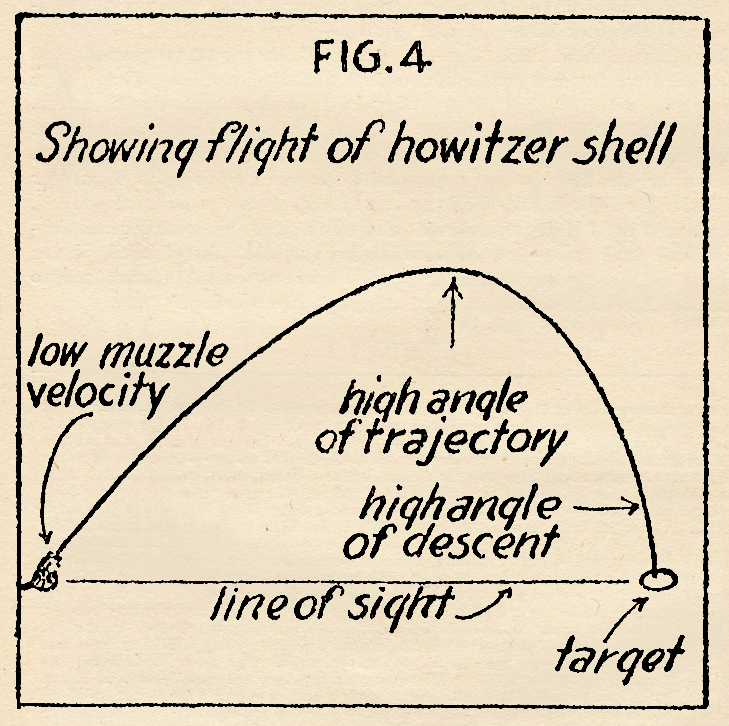
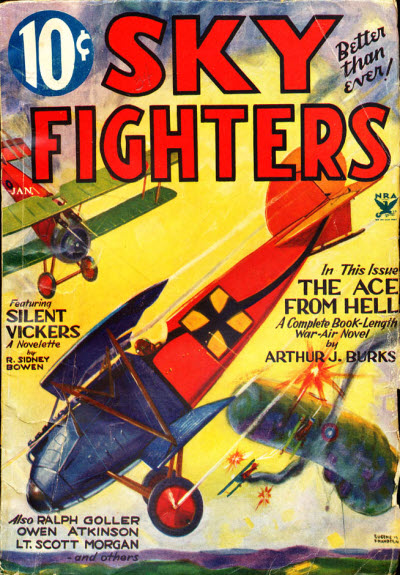 magazine has been exceedingly fortunate in securing R. Sidney Bowen to conduct a technical department each month. It is Mr. Bowen’s idea to tell us the underlying principles and facts concerning expressions and ideas of air-war terminology. Each month he will enlarge upon some particular statement in the stories of this magazine. Mr. Bowen is qualified for this work, not only because he was a war pilot of the Royal Air Force, but also because he has been the editor of one of the foremost technical journals of aviation.
magazine has been exceedingly fortunate in securing R. Sidney Bowen to conduct a technical department each month. It is Mr. Bowen’s idea to tell us the underlying principles and facts concerning expressions and ideas of air-war terminology. Each month he will enlarge upon some particular statement in the stories of this magazine. Mr. Bowen is qualified for this work, not only because he was a war pilot of the Royal Air Force, but also because he has been the editor of one of the foremost technical journals of aviation.



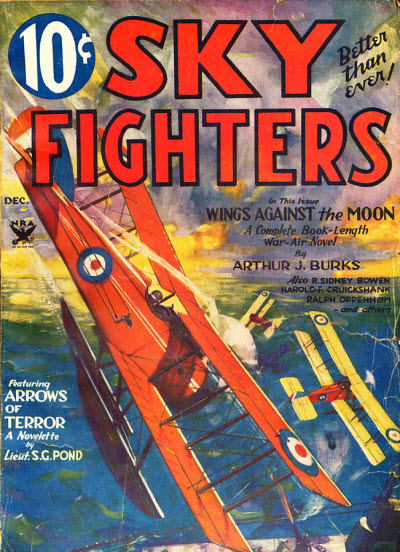 magazine has been exceedingly fortunate in securing R. Sidney Bowen to conduct a technical department each month. It is Mr. Bowen’s idea to tell us the underlying principles and facts concerning expressions and ideas of air-war terminology. Each month he will enlarge upon some particular statement in the stories of this magazine. Mr. Bowen is qualified for this work, not only because he was a war pilot of the Royal Air Force, but also because he has been the editor of one of the foremost technical journals of aviation.
magazine has been exceedingly fortunate in securing R. Sidney Bowen to conduct a technical department each month. It is Mr. Bowen’s idea to tell us the underlying principles and facts concerning expressions and ideas of air-war terminology. Each month he will enlarge upon some particular statement in the stories of this magazine. Mr. Bowen is qualified for this work, not only because he was a war pilot of the Royal Air Force, but also because he has been the editor of one of the foremost technical journals of aviation.


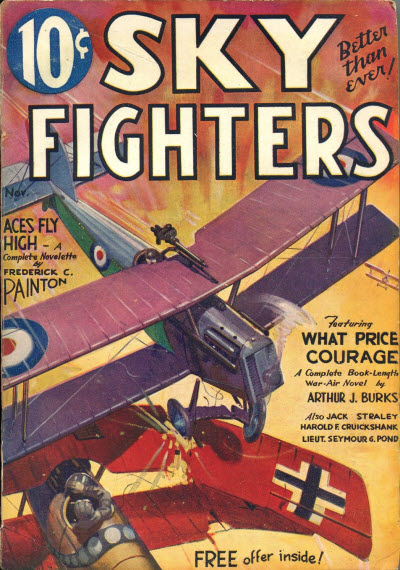 magazine has been exceedingly fortunate in securing R. Sidney Bowen to conduct a technical department each month. It is Mr. Bowen’s idea to tell us the underlying principles and facts concerning expressions and ideas of air-war terminology. Each month he will enlarge upon some particular statement in the stories of this magazine. Mr. Bowen is qualified for this work, not only because he was a war pilot of the Royal Air Force, but also because he has been the editor of one of the foremost technical journals of aviation.
magazine has been exceedingly fortunate in securing R. Sidney Bowen to conduct a technical department each month. It is Mr. Bowen’s idea to tell us the underlying principles and facts concerning expressions and ideas of air-war terminology. Each month he will enlarge upon some particular statement in the stories of this magazine. Mr. Bowen is qualified for this work, not only because he was a war pilot of the Royal Air Force, but also because he has been the editor of one of the foremost technical journals of aviation.



